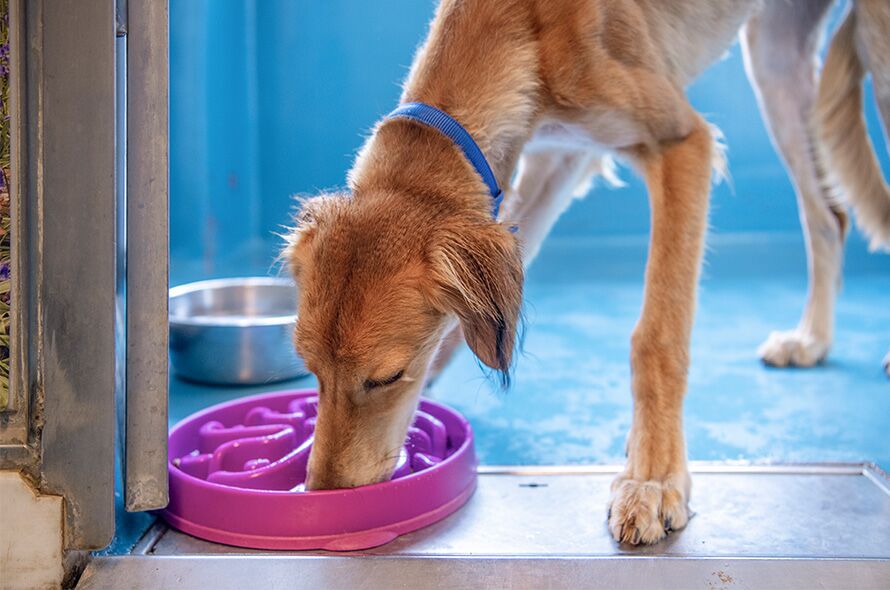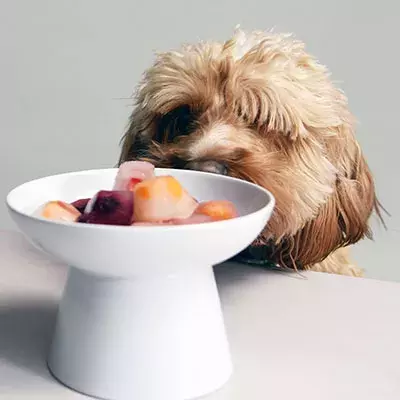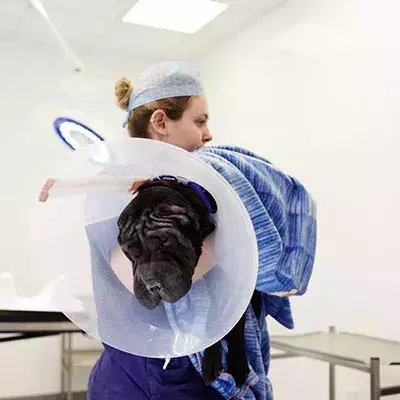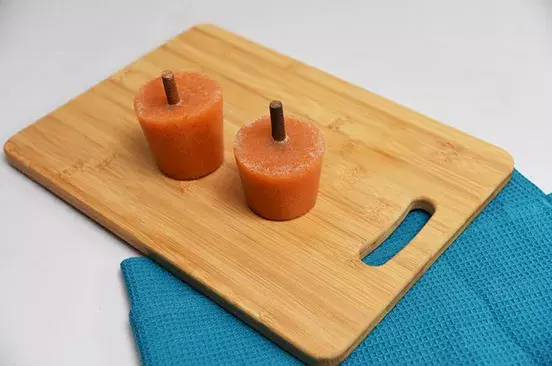For over 160 years, Battersea has weathered many storms to be here for every dog and cat, as well as the community of animal owners and rescue lovers we're proud to represent. The cost of living crisis is no different. We know that as pet owners, you want to give your beloved animals the best, even when money is tight. When deciding on a diet for your dog, whatever your budget, our guide will help you make the best choice.

What To Look Out For When Choosing Dog Food
- Most dog food found in supermarkets or pet shops have a balanced nutritional mix of carbohydrates, proteins, fats, water and vitamins/minerals - this includes both wet and dry options.
- To make sure your dog is getting what they need, try to look for named proteins as the main ingredient. For example, check the ingredients label to make sure that a protein like chicken, fish, or turkey is the main ingredient.
- For dogs, a balanced diet can be achieved by feeding them a variety of food groups including animal proteins, plant proteins and cereals.
Some of the cheapest dog foods may lack key components of a balanced diet. In some cases, this may lead to unpleasant faeces, a less healthy coat, and poor growth and development. In other cases, lacking key nutrients can lead to more serious medical issues such as bony abnormalities, poor vision and heart conditions. If you start to notice any issues, it’s best to contact a vet to check that your dog is getting all the nutrients they need.
Are Homemade Alternatives An Option?
Whilst homemade dog food can be complete and balanced, the variety of ingredients needed to make a fully balanced meal often means that the cost is often higher than the cost of ready-made food. If you’re looking for ways to save money, making your own dog treats can be a cost-effective option. For example, a frozen carrot soaked in chicken broth, or a frozen peanut butter licki mat are great ways to keep your dog entertained without expensive chews and treats. Check out some of our other DIY dog treats. You can also look into purchasing dog food from a wholesaler or consider using a pet food subscription service, as they tend to offer a discounted price.
How To Change Your Dog's Food
If you’re considering changing your dog’s food, it’s worth noting that some dogs can be quite specific about their routines, including what food they eat. We recommend making any changes in food slowly over time, and not making too many changes to their routine at once. Start by feeding your dog a very small amount of the new food, slowly swapping parts of their old food for the new food over the course of a week before changing over completely. It’s not uncommon for dogs to have tummy issues or vomiting if their diet changes too quickly. If you do notice any issues, stop the changes and consult your vet.
To find out more about what Battersea are doing to support pet owners during the cost of living crisis, and for further advice, visit our Cost of Living Support Hub.



